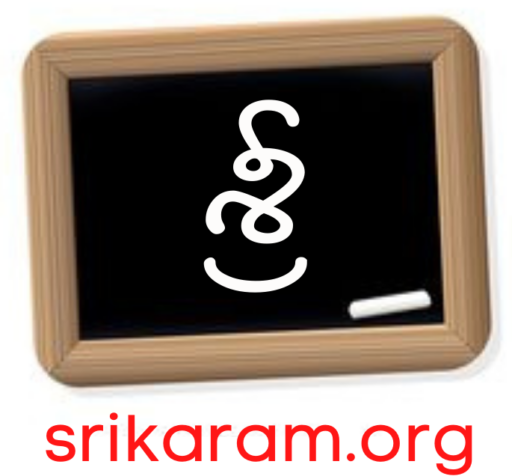Tamil and Kannada are two major Dravidian languages spoken predominantly in South India. Both languages boast rich literary histories and vibrant cultural traditions. Though they share a common linguistic ancestry, Tamil and Kannada have distinct scripts, phonetics, grammar, and cultural nuances. This article explores their key differences in detail.
1. Linguistic Family and Historical Origins
- Common Dravidian Root:
Tamil and Kannada both belong to the Dravidian language family. - Historical Timeline:
- Tamil: One of the oldest classical languages with over 2,000 years of recorded history. Famous for its ancient Sangam literature.
- Kannada: Literary evidence dates back to around the 5th century CE, with inscriptions like the Halmidi inscription (around 450 CE), making it one of the oldest documented Dravidian languages.
2. Geographic Distribution and Speakers
- Tamil:
Primarily spoken in Tamil Nadu, Puducherry, Sri Lanka, and diaspora communities worldwide. Around 75 million speakers. - Kannada:
The official language of Karnataka state, also spoken in parts of neighboring states. Approximately 50-55 million speakers.
3. Script and Writing System
- Tamil Script:
- Derived from Tamil-Brahmi and Brahmi scripts.
- Contains 12 vowels and 18 consonants.
- Simpler and more angular with fewer letters.
- Avoids aspirated consonants and conjunct consonants.
- Kannada Script:
- Evolved from the Kadamba script and Brahmi script lineage.
- Contains 14 vowels and 34 consonants.
- More rounded and curvilinear compared to Tamil.
- Uses conjunct consonants extensively.
4. Phonetics and Pronunciation
- Tamil:
- Simpler phonetic system with fewer consonants.
- Lacks aspirated consonants (no ‘bh’, ‘dh’ sounds).
- Clear, pure vowels without diphthongs.
- Kannada:
- Richer phonetic system including aspirated sounds.
- Has both retroflex and dental consonants.
- Distinct intonation and stress patterns.
5. Grammar and Syntax
- Word Order:
Both languages primarily follow Subject-Object-Verb (SOV) order. - Nouns and Cases:
- Tamil uses fewer noun cases with more reliance on postpositions.
- Kannada has more noun declensions and case endings.
- Verb Conjugation:
- Tamil verbs use auxiliary verbs for tenses and aspects.
- Kannada verbs have complex inflections for tense, mood, person, and gender.
- Gender:
Tamil traditionally recognizes two genders: masculine and feminine/neutral.
Kannada explicitly differentiates masculine, feminine, and neuter genders.
6. Vocabulary and Influence
- Tamil:
- Retains a large portion of its original Dravidian vocabulary.
- Sanskrit influence exists but is comparatively minimal.
- Kannada:
- Contains a significant number of Sanskrit loanwords.
- Also influenced by Marathi, Telugu, and Persian historically.
7. Literary Tradition
- Tamil Literature:
- Ancient Sangam poetry, classical texts like Thirukkural.
- Rich tradition in poetry, philosophy, and music.
- Kannada Literature:
- Oldest known Kannada work: Kavirajamarga (9th century CE).
- Notable writers include Pampa, Ranna, and Kuvempu.
- Flourishing medieval and modern literature.
8. Cultural Context and Usage
- Tamil:
Integral to Tamil identity and culture with widespread use in classical arts and cinema. - Kannada:
Strong presence in Karnataka’s culture, literature, classical music, and film industry.
9. Mutual Intelligibility
Tamil and Kannada are not mutually intelligible despite their Dravidian connection due to differences in phonology, vocabulary, and grammar.
Summary Table
| Feature | Tamil | Kannada |
|---|---|---|
| Language Family | Dravidian | Dravidian |
| Number of Speakers | ~75 million | ~50-55 million |
| Primary Regions | Tamil Nadu, Sri Lanka, Singapore | Karnataka |
| Script | Tamil script (angular) | Kannada script (rounded) |
| Phonetics | Simpler, no aspirates | Complex, aspirated sounds |
| Grammar | Fewer noun cases, simpler verbs | More noun cases, complex verbs |
| Vocabulary | More Dravidian, less Sanskrit | More Sanskrit loanwords |
| Literary History | >2000 years | Since 5th century CE |
| Mutual Intelligibility | No | No |
Conclusion
Tamil and Kannada, while related as Dravidian languages, each carry unique linguistic, cultural, and historical identities. Their distinct scripts, phonology, and grammar highlight the rich diversity of South Indian languages. Appreciating these differences enriches our understanding of the region’s heritage.
